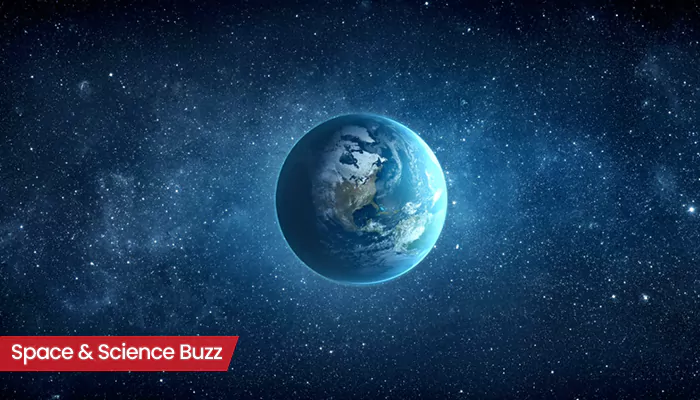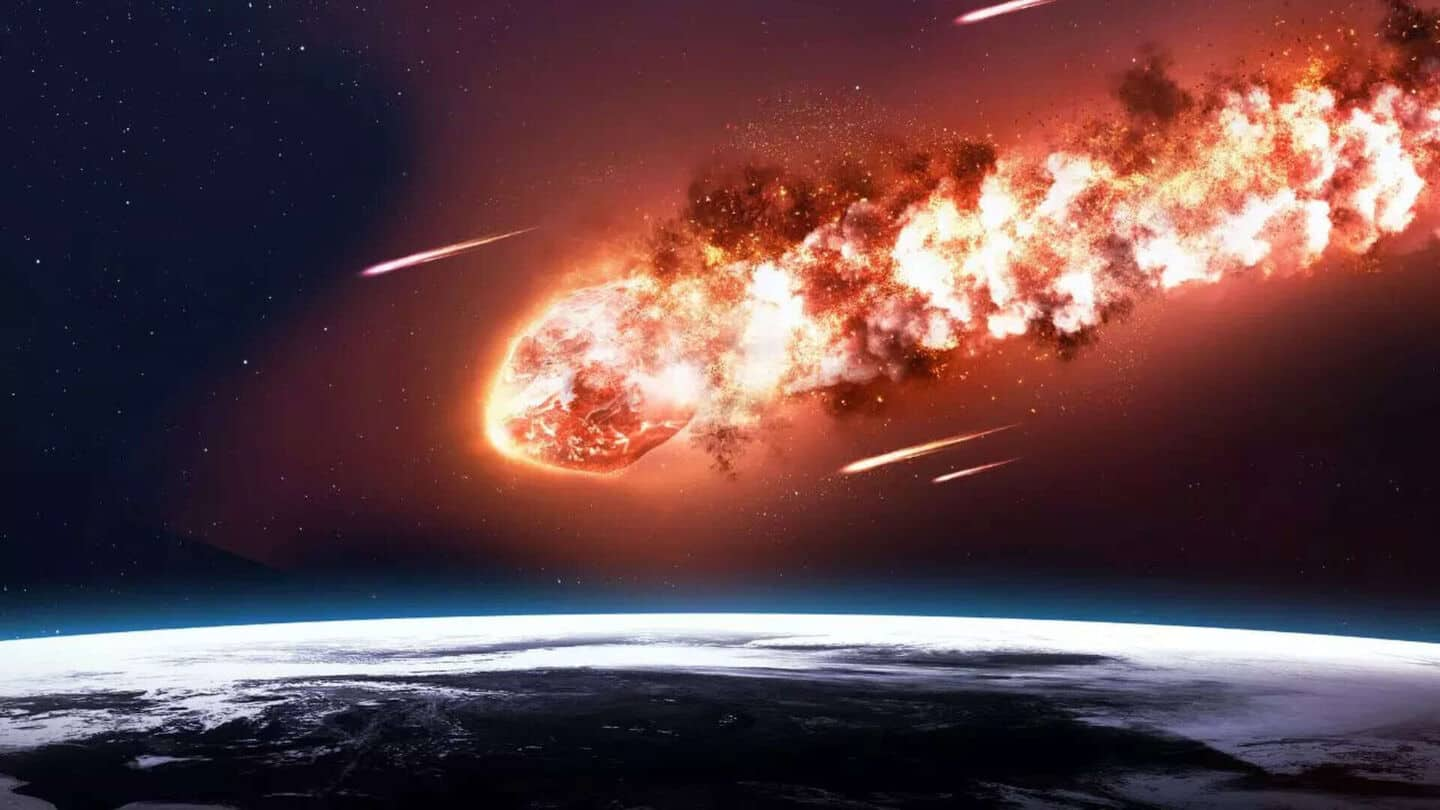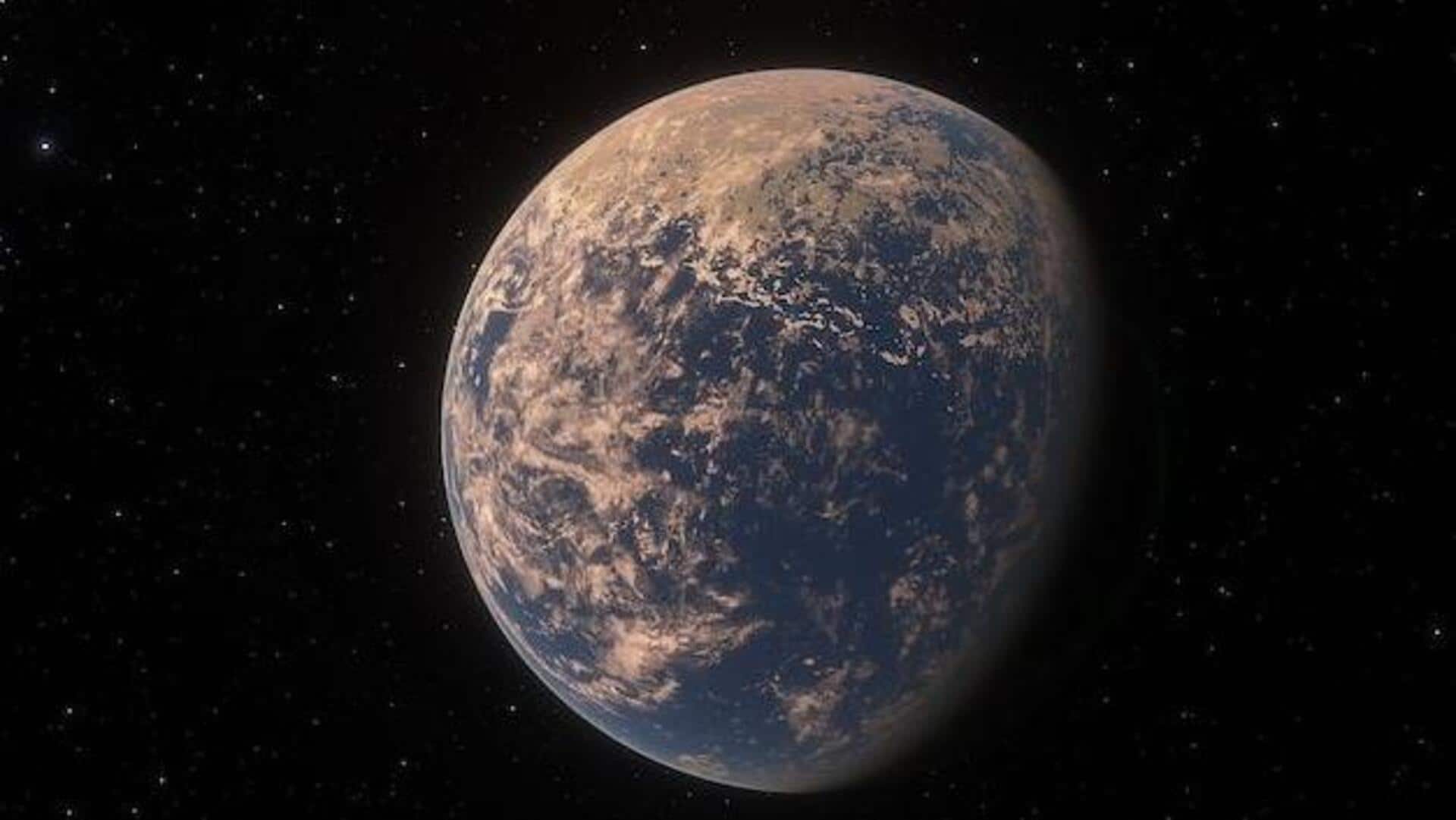Explore mind-bending space facts that'll make you say 'Ajeeb!' Diamond rain, dark matter, and more await! Read on for cosmic wonders
Namaste, space enthusiasts! Buckle up, because today we're taking a cosmic
tour of the weirdest, most unbelievable phenomena our universe has to offer. Forget your usual planets and stars; we're diving deep into the truly bizarre stuff that makes scientists scratch their heads and say, "Yeh kya hai?

!" Get ready to have your mind blown by these 10 facts that'll make you see space in a whole new, ajeeb way.
Planets Neptune and Uranus have diamond rain due to extreme pressure
First up, we have 'Diamond Rain' on Neptune and Uranus. Imagine planets where instead of pani, it rains diamonds! Scientists believe the extreme pressure deep inside these ice giants crushes carbon atoms, causing them to crystallize into sparkling diamonds that then fall through the atmosphere.

Kitna mehenga weather, hain na?
The "Great Attractor" pulls galaxies towards unknown point
Next, prepare yourself for the "Great Attractor." This mysterious gravitational anomaly is pulling galaxies, including our own Milky Way, towards a single point. It's like the entire universe is being drawn towards some giant, invisible magnet.

Nobody knows what it is, but is certainly a strong force.
Boomerang Nebula: Coldest place in universe at -272°C
Then there's the Boomerang Nebula, the coldest known place in the universe. Clocking in at a mind-boggling -272 degrees Celsius, it's colder than the cosmic microwave background radiation (the leftover heat from the Big Bang). How chilly is that, boss?

Exploring the Vast Empty Space in the universe
And then we have the "Vast Empty Space." It's a region of space billions of light-years across that contains almost nothing. No galaxies, no stars, no matter – just empty space. One wonders where the matter for the stars are.

Exploring mysterious fast radio bursts from outer space
Finally, we will explore the mysterious fast radio bursts. These incredibly short, intense bursts of radio waves come from far beyond our galaxy, and their origin is unknown. Some even think they could be signals from alien civilizations. Imagine if they are?
Galaxies harbor supermassive black holes with immense gravitational pull
Now, let's talk about Supermassive Black Holes. Every galaxy, including our own, has one of these monsters at its center. They are millions or billions of times more massive than our sun, and their gravitational pull is so strong that nothing, not even light, can escape.

Just imagine something so strong that even light cannot escape.
Neutron stars: Dense cores of massive stars, spinning fast, emitting radiation beams
Next on list are Neutron Stars. These are the collapsed cores of massive stars, packed so tightly that a teaspoonful of neutron star material would weigh billions of tons on Earth. Talk about heavy, man!

They also spin incredibly fast, some rotating hundreds of times per second and emitting beams of radiation like cosmic lighthouses.
Rogue planets wander alone in space, unbound to stars
Then we will learn about Rogue Planets. These are planets that have been ejected from their solar systems and wander through space alone, unbound to any star. Imagine being lost in space for life!
Scientists estimates there are billions, maybe even trillions, of these rogue planets drifting through the Milky Way.
Saturn's rings composed of ice particles, constantly replenishing
Then we have the rings of Saturn – not just beautiful and majestic, but constantly replenishing with material. They comprised of billions of ice particles, ranging in size from tiny grains to small houses.
Hypervelocity stars escape galaxies at incredible speeds
And don't forget about hypervelocity Stars -- These are stars that have been flung out of galaxies at incredible speeds, sometimes reaching millions of kilometers per hour. These stars are so fast they can escape the gravity of their host galaxy.

Okay, let's dive into something truly baffling
Dark Matter. Scientists believe that most of the matter in the universe is invisible, called dark matter. This mysterious substance doesn't interact with light, so we can't see it directly, but we know it's there because of its gravitational effects on galaxies.

Nobody knows what it's made of, but it makes up about 85% of the total mass of the universe. Khoob ajeeb, no?
Number two is
The Cosmic Microwave Background Radiation. This is the afterglow of the Big Bang, the faint radiation that permeates the entire universe. It's like a snapshot of the universe when it was only 380,000 years old, and it provides valuable information about the early universe.
Imagine seeing the photograph of the universe when it was a baby.
The third one is
Quasars. They are supermassive black holes feeding on gas and dust at the centers of distant galaxies. As the matter spirals into the black hole, it heats up and emits enormous amounts of energy, making quasars some of the brightest objects in the universe.

Some quasars can release thousands of times more energy than an entire galaxy.
Next is
The Event Horizon. This is the boundary around a black hole beyond which nothing, not even light, can escape. Once you cross the event horizon, there's no turning back - you're doomed to be sucked into the black hole's singularity.

And for the cherry on top
Gravitational Waves. These are ripples in the fabric of spacetime caused by accelerating massive objects like black holes and neutron stars. Einstein predicted their existence over a century ago, and they were finally detected in 2015.
Their detection opened completely new window to explore the universe.
Magnetars: Neutron stars with ultra-strong magnetic fields
You might be wondering, what’s so special about Magnetars? These are a type of neutron star with incredibly strong magnetic fields – the strongest in the universe. If that's not strong enough for you, these magnetic fields are so powerful that they can rip apart atoms and warp the shape of space.

They sometimes erupt with powerful bursts of X-rays and gamma rays.
Universe's large-scale structures form cosmic web of galaxies and voids
Another weird fact is Large-Scale Structures. On the largest scales, the universe is arranged in a vast cosmic web of galaxies, filaments, and voids. Galaxies cluster together along these filaments, leaving huge empty spaces called voids. It's like the universe is a giant sponge.

Gamma-Ray Bursts: Universe's most powerful explosions from star collapse or neutron star collision
Then we have Gamma-Ray Bursts. This means the most powerful explosions in the universe. It releases more energy in a few seconds than the Sun will emit in its entire lifetime. Scientists believe they're caused by the collapse of massive stars or the collision of neutron stars.

Cosmic voids: vast empty regions in space
And also have Cosmic Voids. Regions of space are so empty that these are not common regions. These are vast, with hardly any galaxies or matter within them. Some of these cosmic voids can be billions of light-years across, making them some of the largest structures in the universe.

Many habitable exoplanets exist beyond our solar system
Let's not forget about the habitablle exoplanets. Outside our solar system, there are many planets like Earth that has life supporting conditions.

Galaxies merging, cosmic cannibalism, Milky Way meets Andromeda
Now, let's look at the "Cosmic cannibalism." It is a phenomenon where larger galaxies consume smaller ones; this process is an integral part of the galactic evolution. The Milky Way galaxy is on a crash course with the Andromeda galaxy and will eventually merge into one giant galaxy.

Imagine those planets getting destroyed!
Gravitational lensing magnifies distant objects for astronomers
Next, the phenomenon of gravitational lensing. Massive objects like galaxies and black holes can bend the path of light, acting like cosmic magnifying glasses. This allows astronomers to see objects that are much farther away and fainter than otherwise would be possible.

The presence and position of dark matter could be investigated with gravitational lensing, as well.
Iconic Pillars of Creation birth new stars, celestial beauty
Then we have the Pillars of Creation. These are towering columns of gas and dust where new stars are being born. The images of the Pillars of Creation are some of the most iconic images in astronomy. These give way to celestial aesthetics .
High-energy cosmic rays from space can harm electronics and astronauts
Also, the cosmic rays are high energy of particles travelling across space at nearly the speed of light. Coming from a variety of sources, like accelerating particles powered by the supernova explosion. They can even damage electronics in space or harm astronauts.
Exploring the Kuiper Belt beyond Neptune, a relic of the early solar system
And finally, lets discuss the The Kuiper Belt. It is a region beyond Neptune that contains a vast number of icy bodies, including Pluto. The Kuiper Belt is thought to be a remnant of the early solar system. Many more interesting things are to be discovered.

Ten bizarre space phenomena challenge your understanding of the universe
So there you have it, folks! Ten unbelievably bizarre phenomena in space that'll make you question everything you thought you knew about the universe. From diamond rain to rogue planets, the cosmos is full of surprises.
Keep looking up, keep exploring, and keep wondering – because there's always something new and ajeeb waiting to be discovered in the vast expanse of space. Jai Hind!
AI Generated Content. Glance/InMobi shall have no liability for the content









